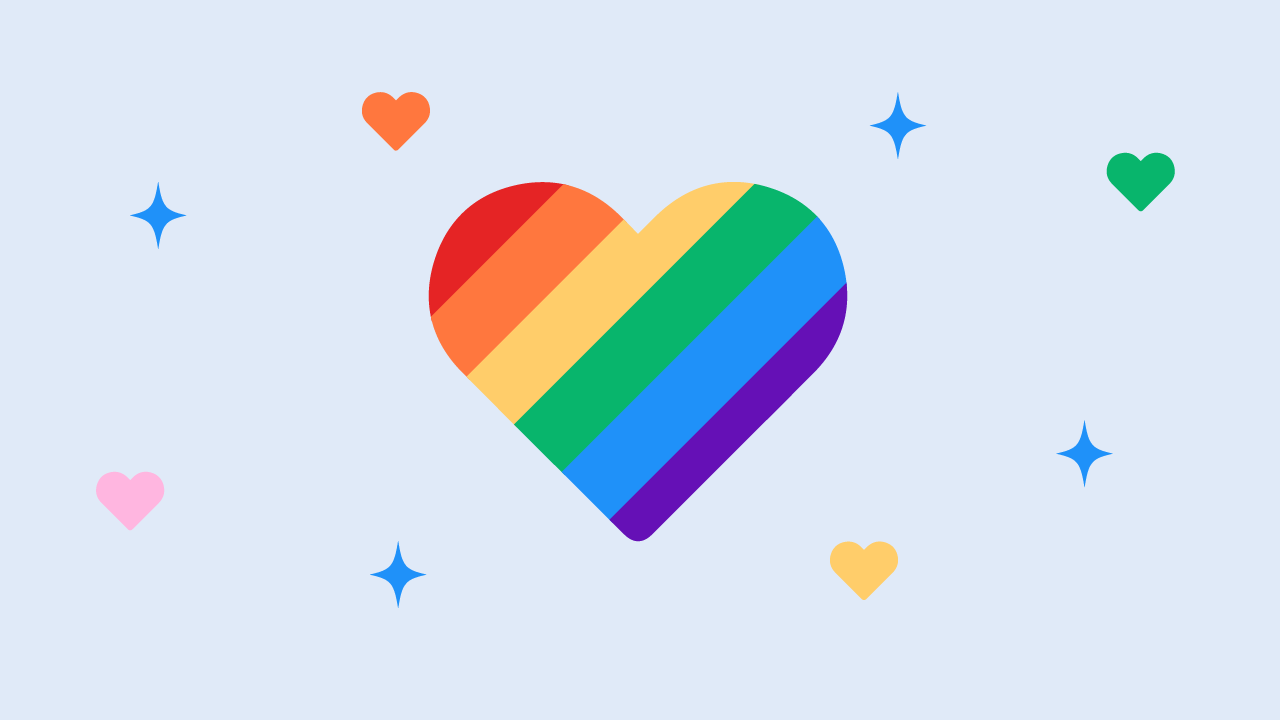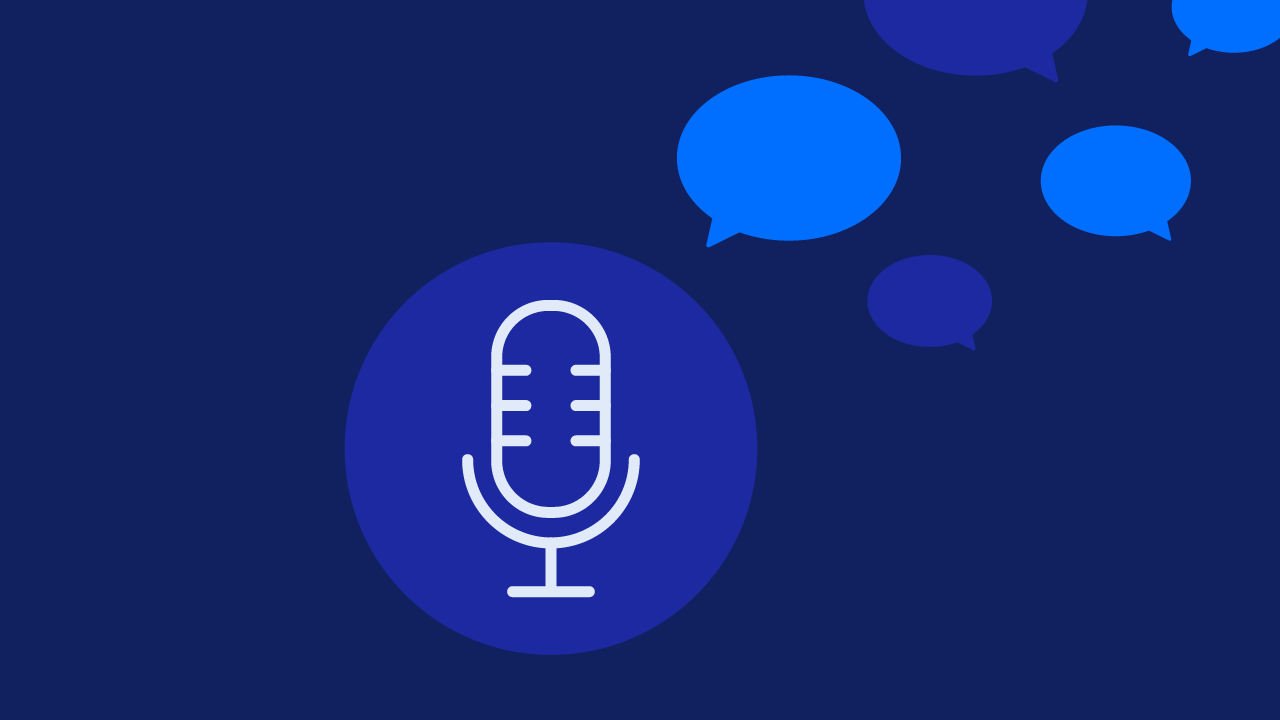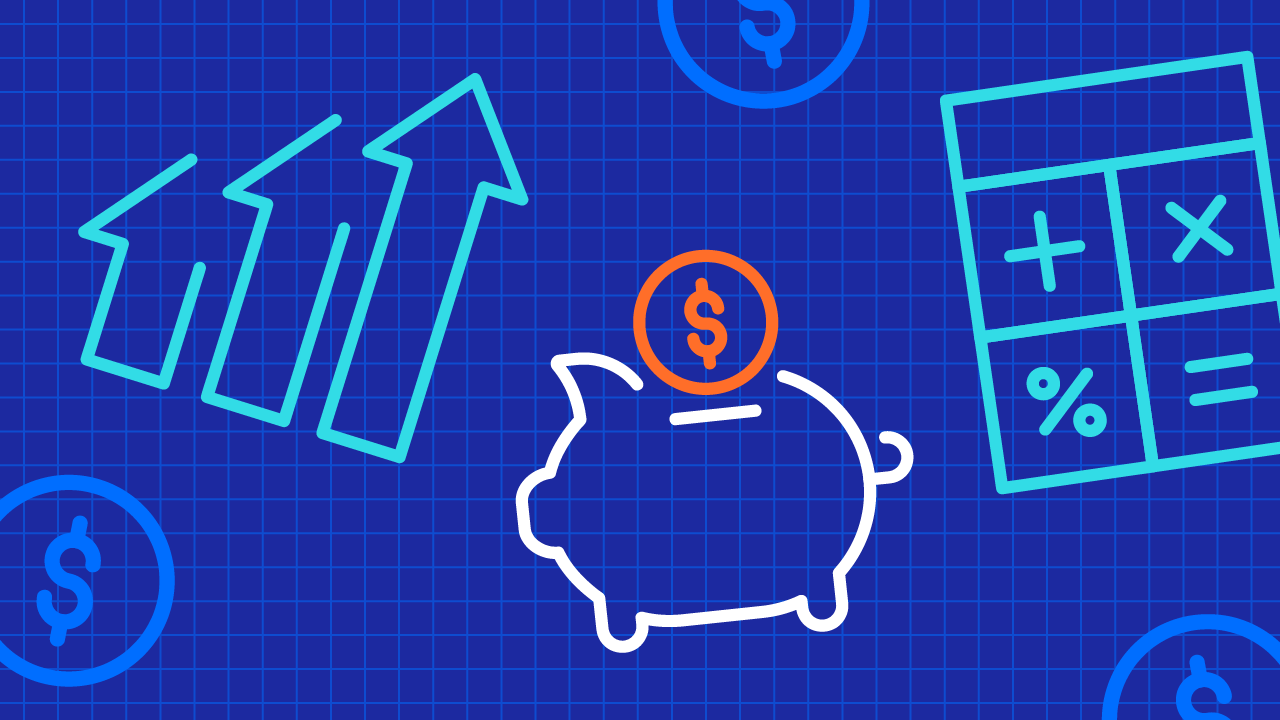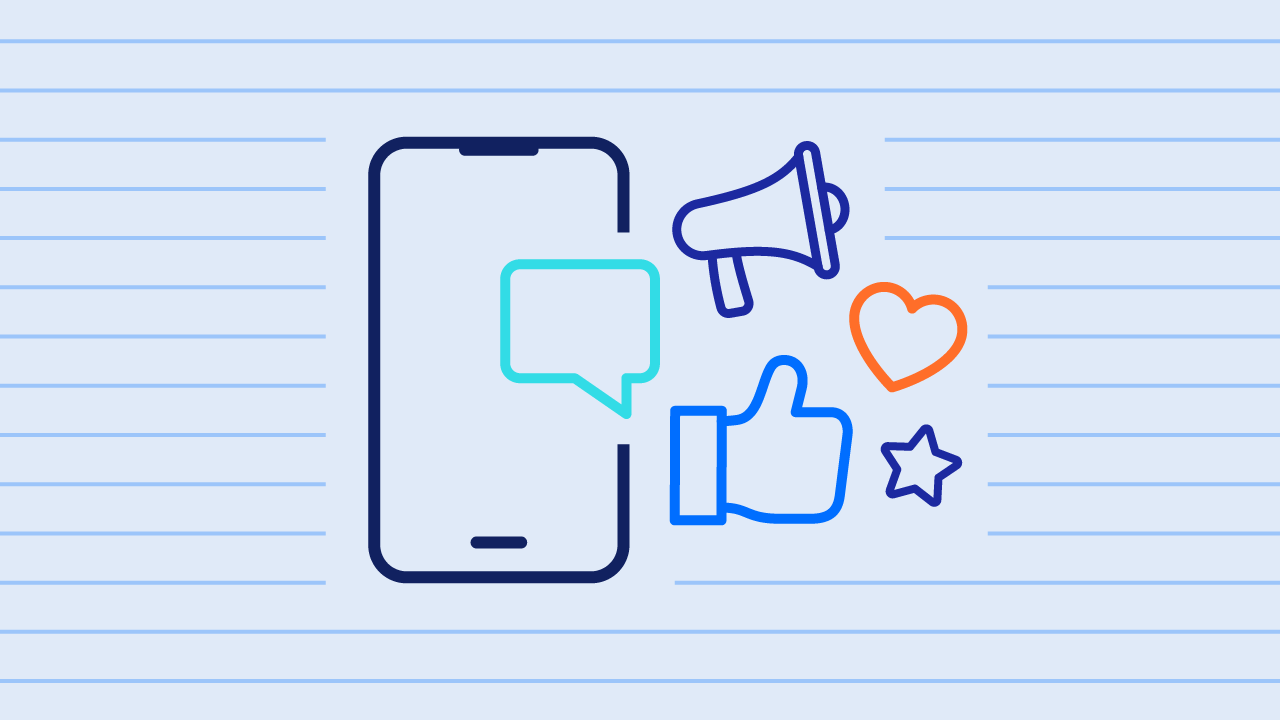Pride Month, first recognized in 1994 as LGBT History Month, is a celebration of the LGBTQIA+ community – promoting awareness, advocating for inclusion, and honoring love in all its forms.
The origins of Pride Month stem from the Stonewall Riots of June of 1969, where a police raid on a gay bar in Manhattan, the Stonewall Inn, turned violent. Unlike previous raids, patrons and neighborhood residents fought back, sparking several protests to stand up for gay rights and equality. The riots galvanized the LGBTQIA+ community and led to the formation of numerous gay rights organizations. On the anniversary of the riots, the first Gay Pride marches were held, which eventually became an annual, nationwide event.
Today, Pride is a month-long celebration recognizing the lives and accomplishments of the LGBTQIA community, while also serving as an important reminder of the continuing fight for LGBTQA+ rights and equality. With various activities and events taking place throughout the month, people of all backgrounds are encouraged to participate, show their support, and demonstrate their allyship.
In addition to LGBTQIA+ individuals and their allies, corporations, brands, and businesses also increasingly take part in Pride Month celebrations, using their platforms to show their support for the LGBTQIA+ community and promote messages of inclusion and acceptance.
But without the right consideration and approach, such efforts can come across as inauthentic, disingenuous, or opportunistic. The brands that truly understand the spirit of Pride month are those that seamlessly weave allyship into their core values and initiatives year-round.
So this month, we want to highlight some of those brands, and what public relations teams can learn from their approach.
5 Top Pride Brand Campaigns
1. H&M "Beyond the Rainbow" Campaign
H&M launched their “Beyond the Rainbow” campaign in 2021, an interactive and emotional campaign that shared stories from LGBTQIA+ individuals and encouraged people to share their own experiences. By scanning any rainbow Pride flag, users were led to a series of heartbreaking and heartwarming stories from people of different ages, genders, and sexual orientation from across the globe. The campaign focused on celebrating everyone’s right to be themselves.
Reinforcing their commitment to equality, H&M also donated $100,000 to the United Nations Free & Equal campaign, which launched in 2013 to increase awareness and support for the LGBTQIA+ community.

2. Converse "Proud to Be" Campaign
This campaign celebrated diversity and self-expression within the LGBTQIA+ community, with empowerment messaging championing freedom and love. Their expansive Pride product collection, created by LGBTQIA+ employees and allies, focused on inclusivity with a wide range of silhouettes and gender-neutral sizing for the sneakers.
The brand thoughtfully partnered with influencers who are well-known members of and champions for the LGBTQIA+ community, including Grammy Award winning artist Big Freedia, singer/songwriter Eva Westphal, artist Yeliz Aifoglu, and multi-disciplinary creative Xavier ‘Internet X’ Means.
3. Lego "Everyone is Awesome" Campaign
In 2021, Lego recognized the diversity of its customers and the world around us with a new rainbow Lego set. This colorful set focused on inclusion with 11 different gender-neutral minifigures each with its own individual hairstyle and rainbow color.
The campaign also featured content from LGBTQIA+ employees and fans. Matthew Ashton, vice president of design, was a prominent figure throughout the campaign. He had originally created the Lego set for his own desk after moving offices. But as it attracted attention internally, he realized this was something that should be shared.
“The starting point for this was my feeling that we, as a society, could be doing more to show support for each other and appreciate our differences. Being LGBTQIA+ myself, I knew I needed to step up to the plate and make a real statement about love and inclusivity, and generally spread some LEGO® love to everybody who needs it.” - Matthew Ashton
Well, share they did. It not only garnered plenty of earned media coverage, sales, and engagement from the public, but it even won the brand a British LGBT Award in 2022.
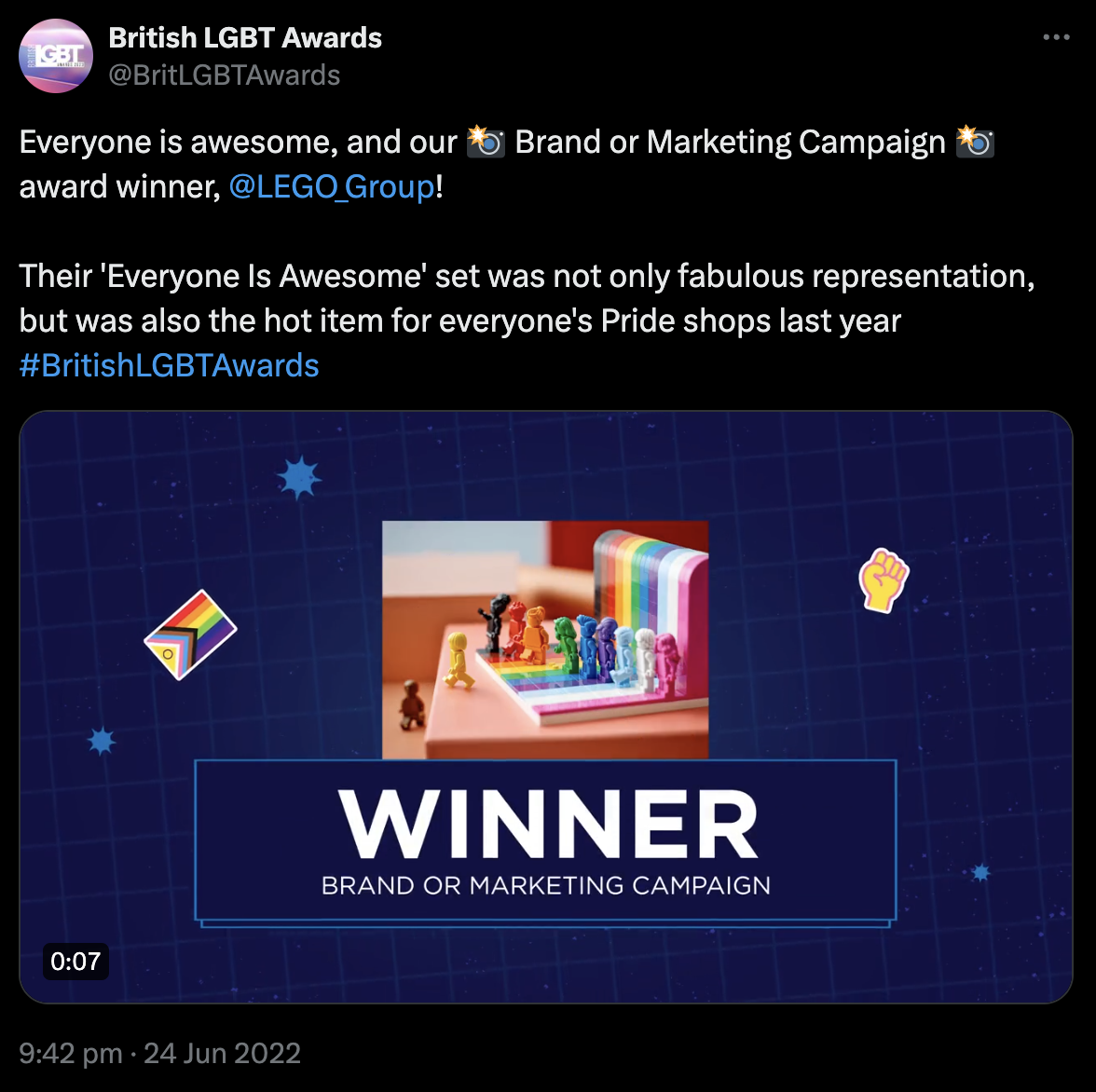
4. Skittles Pride Packs Campaign
Each year for Pride Month, Skittles removes the colors from their fruit-flavored candy, turning it grey. Their goal? To draw attention to the rainbow Pride flag and how boring our world would be without all the colors – a clever way to celebrate the diversity within our broader population and the LGBTQIA+ community.
But in 2022, they took their efforts one step further. Beyond creating awareness and support for the LGBTQIA+ community, Skittles donated $1 (up to $100,000) to GLAAD for every Pride pack sold, just another element to their ongoing support and partnership with GLAAD. And these Pride packs came with unique, limited-edition packaging designed by five talented artists from the LGBTQIA+ community.
To amplify and spotlight LGBTQIA+ individuals, they also teamed up with Audible, QUEERY podcast host Cameron Esposito, GLAAD, and the artists to make original stories and excerpts of other relevant programming available online at no cost to the public through a QR code on packaging and promotional materials.
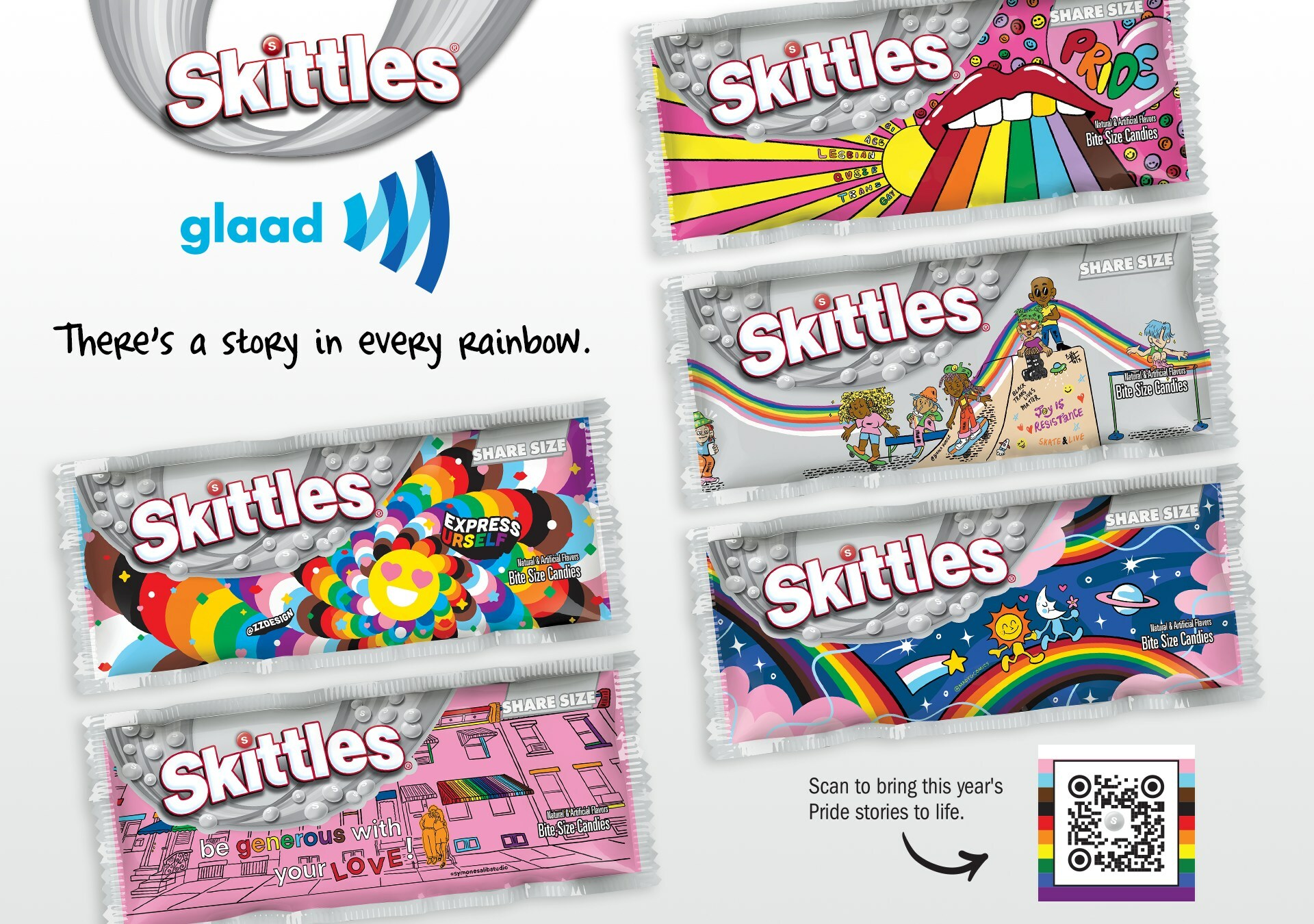
5. Gillette “First Shave” Campaign
The brand has certainly evolved since launching their tagline, “The best a man can get,” more than 30 years ago. Today, their campaigns are focused on helping men be more confident and comfortable with their true selves. Their “First Shave” campaign in 2019 redefined the idea of masculinity, sharing the intimate story of a young trans man’s first shaving experience with his father.
Samson’s first shave is an important milestone in his transition, and his father’s encouraging words reflect his love and acceptance of the person his son has become. The story is told by Samson, not the brand, which gives the campaign more validity and helped it resonate and connect with individuals both within and outside the trans community.
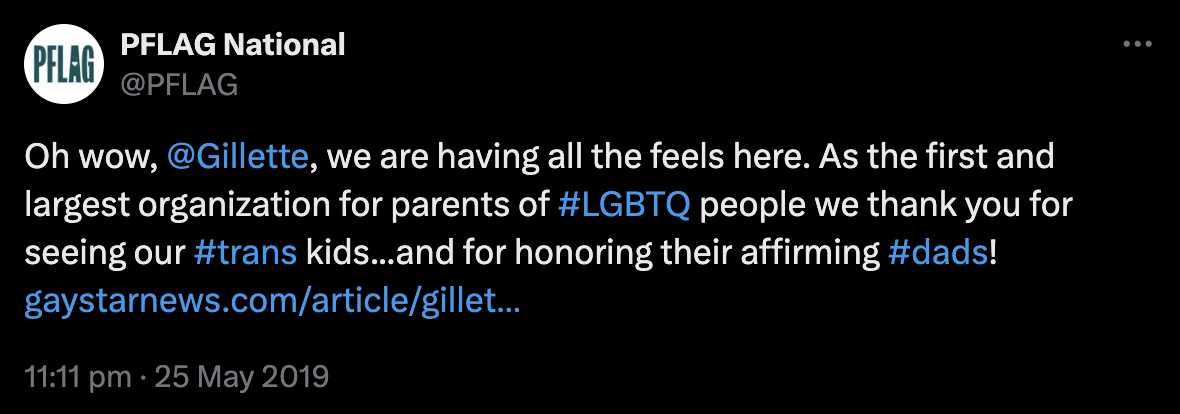
What These Brands Get Right: Lessons for PR
No matter the event – whether it’s Pride or another important cultural recognition – it's more important than ever to engage the public in an authentic and sensitive way. Here are key factors that made these Pride campaigns resonate.
Authenticity and Long-Term Commitment
If your campaign is centered around supporting a specific community or cause, that support should be part of your company's brand values, culture, and operating practices - not just one-time PR campaign. Make sure concrete actions and initiatives are in place internally that match the message you're putting out. If not, audiences will see right through it.
For example, LEGO’s engagement with the LGBTQIA+ community has taken various forms over the years, from financial donations and product designs to marketing campaigns. But perhaps even more importantly, they started from within. LEGO fostered a culture around diversity and inclusion, partnering with organizations like Workplace Pride and Stonewall to shape their support for employees who identify as LGBTQIA+. Fueled by this atmosphere of acceptance, the “Everyone is Awesome” set was designed, produced, and celebrated both internally and externally for its message promoting love and diversity.
Purposeful Impact
To make a meaningful impact, align your campaign with a purpose that directly benefits the specific community you’re recognizing – whether that’s awareness, advocacy, fundraising, etc. No one needs (or wants) a brand’s superficial message of support, regardless of how interesting or flashy the graphics may be. Instead, audiences are interested in genuine engagement and how the brand is making a positive difference in the world.
As mentioned above, both Skittles and H&M gave monetary support to relevant LGBTQIA+ organizations along with their brand campaigns, just one piece of their longer-term commitment to organizations advocating for the rights and equality of LGBTQIA+ individuals.
Advocacy
When it comes to cultural events and causes, brands can use their platform to advocate about the issues, promote acceptance, and press for equal rights and representation. This type of support can be powerful for marginalized or underrepresented communities.
Gillette’s campaign is a great example of how a brand can increase awareness and empathy for a specific community. Their “First Shave” promotion encouraged acceptance and support for trans individuals, who are often portrayed in a negative light and historically targeted with violence and discrimination.
Collaboration
There’s no better place to start your collaborative efforts than with employees. They’re already brand ambassadors, influencing conversations amongst friends, family, and followers. Invite employee resource groups or the broader employee base to participate in campaign development and sharing the message after launch. Being open to their feedback and input only furthers your efforts to foster a supportive culture and can help you avoid any missteps.
It’s also a good idea to look outside your organization. Collaborating with influencers and organizations who represent or advocate for the community you’re supporting can amplify your messaging. Together, you can co-create campaigns that reflect diverse voices and experiences and build more credibility with audiences. Just be sure any partner’s values are in alignment with those of the brand.
Converse gave us a good example of this approach with their "Proud to Be" Campaign. Their partnership with well-known, influential members of the LGBTQIA+ community helped expand the audiences reached through their campaign and increased engagement.
Listen and Learn
It’s important to actively listen to conversations surrounding your brand and campaign. Be open and ready to evolve based on audience feedback, especially input from the community you’re supporting. It’s an opportunity to learn and improve your approach, which goes a long way toward brand trust.
Earlier Skittles Pride campaigns were called out for mostly promoting a gimmicky product, without any action to back it up. They have since evolved their corporate strategy to demonstrate a more comprehensive approach to supporting the LGBTQIA+ community with their long-term GLAAD collaboration, financial donations, and partnerships with LGBTQIA+ individuals. Skittles’ ability to grow and evolve as an organization has earned them credibility and trust with audiences.
Stand By Your Messaging
Be ready to stand by your message in the face of possible criticism. Taking a stand in such a politicized environment can be scary, and not everyone is going to embrace it, so make sure you are willing to stand by what you say. Walking back your support will only earn you backlash from all sides – potentially causing long-term impacts beyond the initial PR crisis – and even worse, alienate the people you were hoping to reach.
The brands mentioned above didn’t change their stance when faced with criticism over their Pride campaigns. Take Gillette’s statement in response to negativite reactions from the public:
“We anticipated there would be some negative response to this video, however we’re thrilled with the overwhelmingly positive responses we’ve seen, from both consumers as well as organizations... As a brand committed to helping men look, feel and act their best, it’s important to us to embrace inclusivity in how we portray masculinity. This is especially true for Samson and others in the trans community, which is why we created ‘First Shave.'”
Bottom Line: Events like Pride Month provide an opportunity for brands to show meaningful support to causes and communities, using their platforms to promote awareness and make a positive impact on the broader community. By following the examples set by companies like H&M, Converse, Lego, Skittles, and Gillette - centering around authenticity, meaningful impact, collaboration, and a willingness to listen and evolve - brands can build trust not only with the communities they’re supporting, but also with the broader public who increasingly expects companies to be good corporate citizens and use their influence for positive societal change.
For more insight on effective brand storytelling, check out these related resources:

